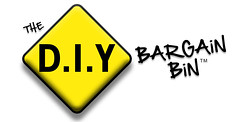Yesterday we brought you how to prepare to remove a wasp nest safely and today we will provide the detail behind each of those options.
Removing the wasp nest safely:
1. Freeze / drown the wasps
This option requires two people to implement, and for you to have a large plastic box with a tight lid that will seal the wasps inside. It is important to ensure that the plastic box is larger than the wasp nest to make this successful. The way this technique from eHow works is to have one person hold the box under the nest and the other to clip the nest from its position using a long handled pruning tool.
As soon as the wasp nest lands in the the box, the assistant will need to quickly seal the lid over the wasps.
My issue with this technique comes into play here. You will then need to have either a big enough freezer to place the box inside, which will allow you to freeze the wasps, or you will need to fill your bath tub with water and use a brick on top of the plastic box to submerge the wasps till they die. Using a clear plastic box is obviously going to be easier to judge the results.
The main thing for me with this technique is that you need to bring the wasps into your home and for me I just don’t like that idea no matter how sealed they are.
2. Burn out the wasps
I don’t even want to think about this one, there is far too many things that can go wrong with trying to burn out wasps, especially as wasps are most common in the summer when the risk of fire is so great. In addition fire really aggravates the wasps and you are much more likely to get stung, not to mention your exposure is longer.
3. Use a pesticide
This is a really good option for many people. Ensure that you have your assistant on hand to hold the ladder and help you with the application. Both of you should be well covered and you should have fully read the instructions and warnings prior to using it.
If you have kids or pets make sure that they are well away from the area that you are going to spray and that you quarantine the area for some days after. Better still go for an all natural pesticide.
Another tip is to look for one with a long distance spray, which will enable you to stand well away from the wasps. Try to ensure that you are not directly under the wasp nest either as this is where the wasps will be most likely to attack.
Spray the wasp nest in one long continuous spray covering as much of the surface area of the nest as you can. Then remove yourself from the scene. If you like you can repeat the process the following day and then you should be right to safely remove the nest 24 hours after that. Ensure that you are still fully protected on both of these subsequent tasks.
4. Use a Soap and Water spray
This is my favourite method as it is safe to use, will not leave any chemicals anywhere that kids or pets may come into contact with them and it is effective.
Make up a large batch of very soapy water and using a spray gun or something similar spray and coat the wasp nest thoroughly. Like with a pesticide, do one continuous spray to coat as much as possible and then remove yourself from the scene.
Soap and water clogs the wasps pores and weighs it down. Eventually the wasp will suffocate and die. You are likely to find clumps of wasps on the ground after using this method, but remember it may take them some time to die and they are still able to give a mighty sting at this time.
Use a long handled pruning tool to cut down the nest a few days later. Be prepared just in case there are more wasps.
A great video on this process is here.
Summary:
All in all remember to protect yourself and ensure that this video is not you – Not only is this person stung but they could have been seriously harmed. We strongly recommend that you use your assistant to help you rather than video you! 🙂 More information on how to kill wasps can be found here.






